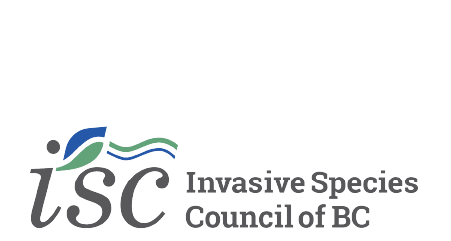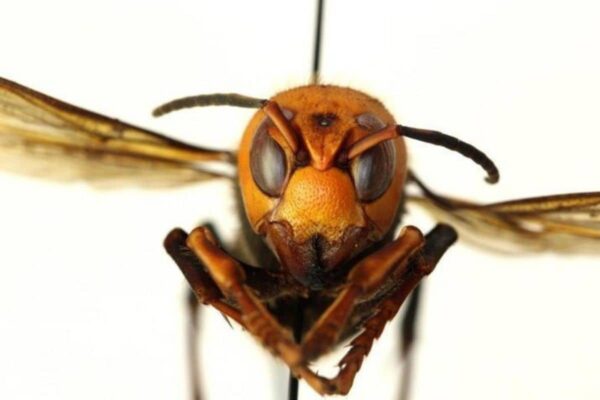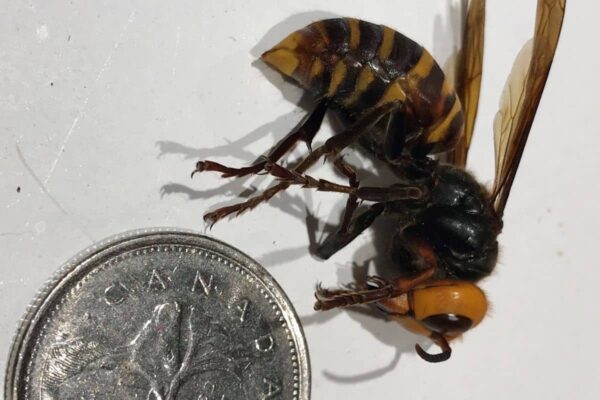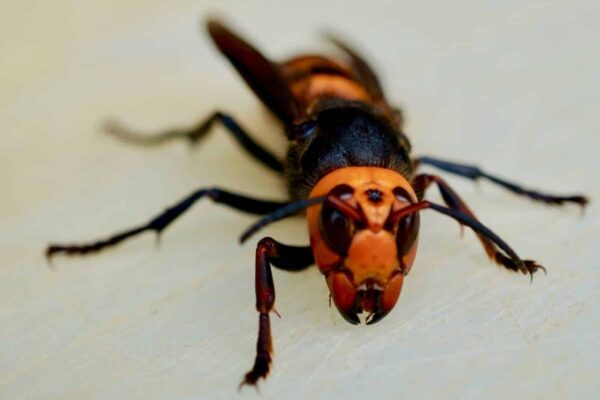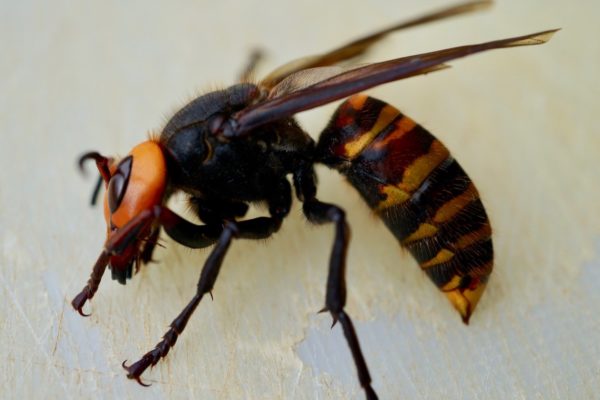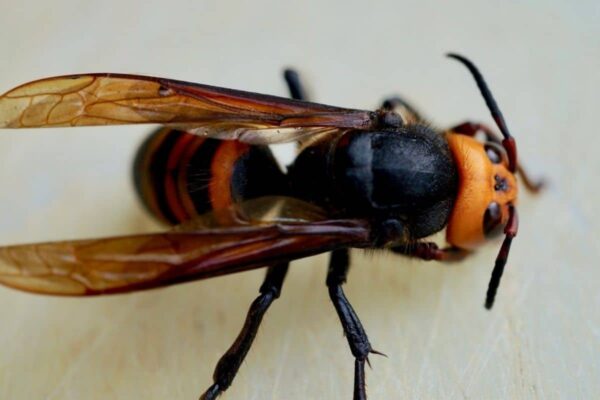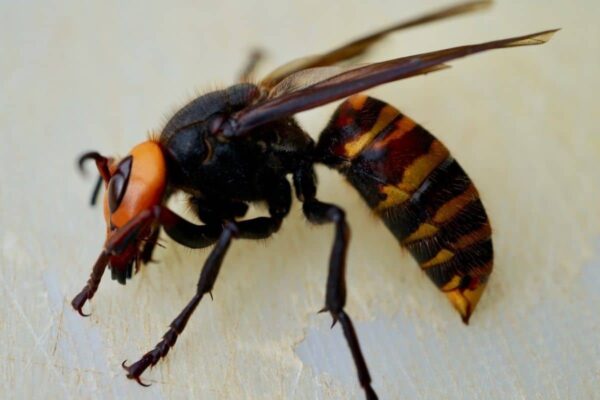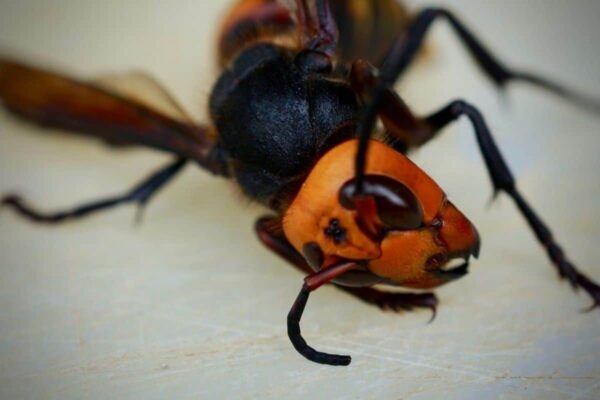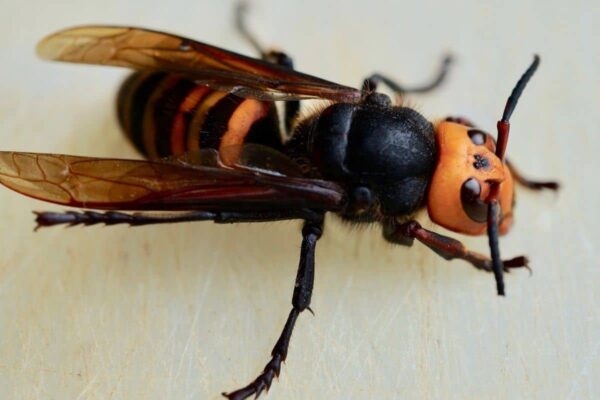Northern giant hornet
Warning
This is a stinging insect. Hornets will deliver a painful, venomous sting in defense of their nest, and each hornet can sting multiple times. If you are allergic to bee or wasp stings and are stung, or if you receive multiple stings, seek medical attention. If you believe you have found a Nothern giant hornet nest, do not attempt to remove it.
About This Species
Northern giant hornets are the largest hornet in the world. They are found throughout South and East Asia and were likely brought to North America accidentally on container ships. They are not established in BC. They typically nest in underground cavities, or above ground in tree stumps of forested areas. They feed on insects and are particularly dangerous to honeybee hives. If they establish in BC, they may pose a serious threat to our beekeeping and commercial pollination industries, which in turn will have serious consequences for BC agriculture.
They are found throughout South and East Asia and were likely brought to North America accidentally on container ships. Asian giant hornets were first seen in BC in 2019 in Nanaimo. Following this discovery, BC government officials together with local beekeepers destroyed the nest in Nanaimo. In October 2020, WSDA officials destroyed a nest directly over the US-Canada border in Blaine, Washington.
The Washington State Department of Agriculture maintains a virtual, interactive map of all Northern giant hornet sightings in Canada and the United States. Northern giant hornets are designated as a Provincial EDRR species by the BC Provincial Priority Invasive Species List.
How to Identify
The head is bright orange with large jaws and entirely black eyes. The thorax (where the legs and wings attach) is dark brown or black, and the wings are tinted a dark brown. The abdomen has regular black and orange horizontal stripes.
Depending on the bee caste (drone, worker or queen) the size varies between 2.5 cm to 5 cm.
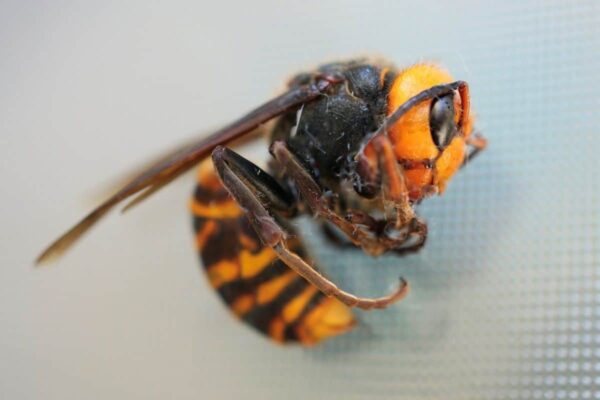
Take Action
Prevention is the best approach.
-
If you need advice about invasive species on your property or you are concerned about reported invasives in your local area, contact your local government or regional invasive species organization.
REPORT TO PROTECT BC’S BIODIVERSITY
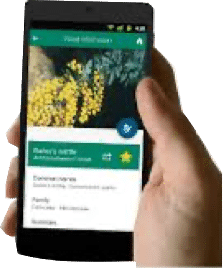
Use the app
Observe and report to protect BC’s biodiversity

Report through this website
Use our form to tell us what you’re seeing and where.


